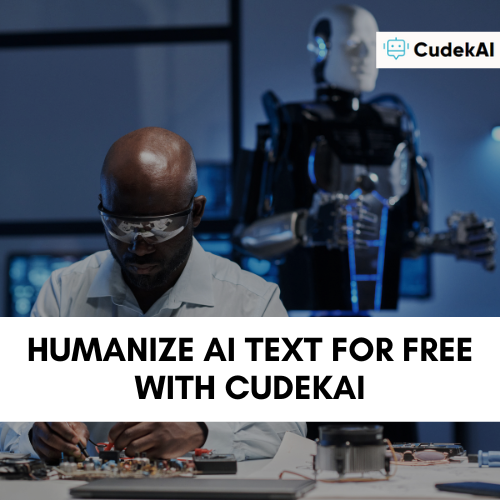How AI-Generated Content is Changing Learning for Humans

Education has always evolved along with technological advancements. While acting as a powerful tool, AI has been shaping the traditional landscape of learning. It is now redefining how educational material is created and delivered. With AI becoming a great partner, educational experts, and institutions are moving more towards efficient learning and more personalized ways. Let’s delve into this blog, where we will explore how AI content to human is changing learning for humans.
The Emergence of AI in Education
The involvement of technology in education has a long and rich history, evolving from simple tools to advanced systems that enhance learning experiences. Initially, technology only revolved around providing basic computer training and educational games. However, with the advent of AI, there has been a development of more interactive and adaptive learning systems.
The introduction of AI in education began with simple software and applications like tutoring systems, but now it has progressed to more personalized learning systems and automated content generation. This partnership of AI content with human interaction in education has completely changed the way educationalists and students engage with the material. They have tailored educational styles to individual learning styles making education more effective.
Benefits of AI content to human interaction in learning

Machine-generated content in education, driven by AI, is reshaping the learning experience in different ways. One of the significant ones is the personalization of learning experiences. AI algorithms can analyze individual learning patterns and tailor content according to the needs of each and every student. This system and style ensure that each student can grasp concepts more effectively, thus enhancing the learning experience.
Another advantage is the enhanced accessibility and diversity of learning materials. AI can produce a wide range of content that caters to diverse educational needs. This ensures inclusivity and makes education accessible to those with different and varied abilities and from different cultural backgrounds.
The efficiency of content delivery is also improved with AI content to human interaction. Now, the learning materials can be quickly distributed and updated to keep pace with the various developments. As a student or educationalist, you can track real-time progress in much faster ways and then adjust accordingly.
Challenges and concerns with machine-generated content
The involvement of AI-generated content in education presents many challenges and concerns. The main issue is the content quality and accuracy. As educational institutions increasingly rely on AI tools to generate learning materials, it is important to uphold the academic integrity of these resources. The machine learning models are biased and inaccurate. This can lead to skewed content that can misinform students rather than educate them.
This has also raised a lot of questions about the careers of teachers and educationalists as a profession. The use of AI tools involves the handling of vast amounts of student data, and this can eventually lead to problems like privacy and security.
Last but not least, another issue that can create problems for the future of the students is their dependency on these tools. This can stop the students from being creative and dealing with problem-solving tasks, restricting their ability to think independently and critically.
Case studies and success stories
Are you ready to unwind some success stories that have taken place as a result of this AI content to human interactions? If yes, then have a look!
We have seen several case studies that showcase positive outcomes. Among them is the story of Georgia Tech’s AI teaching assistant, “Jill Watson,” who is based on IBM Watson’s platform. This successfully answered students’ queries in a computing course. In another example, Carnegie Learning’s adaptive learning software has been implemented in some US schools. This resulted in an improvement in math test scores. AI content to human interaction in education has shown promising results while boosting the engagement and academic achievements of students.
The future of AI in education
As technology advances, the role of AI in education is going to become more transformative. The traditional teaching methods will become advanced. Teachers might start providing content that is AI-generated and get more focused on personalized learning. This promises a more engaging and effective learning environment for students of all ages, from primary to secondary, and even at university levels.
Challenges and concerns
Where AI brings more opportunities in the educational sector, so do the challenges and concerns. One of the major issues that might be taking place is the digital divide. This means that not all the students are getting the chance and equal access to technology.
We cannot totally rely on AI, as, in the end, it’s a machine. There are chances of errors, misleading information, and the quality of the content created by AI. The data it uses of the students is no longer private and safe. And in the end, it can be biased, thus creating problems for some students.
All-inclusive
AI content to human interaction in education has many positive outcomes, but you can also face challenges. So, be careful and take each step with proper planning and thoughtful work.